
Davis, Aron. The Poker Blueprint
.pdf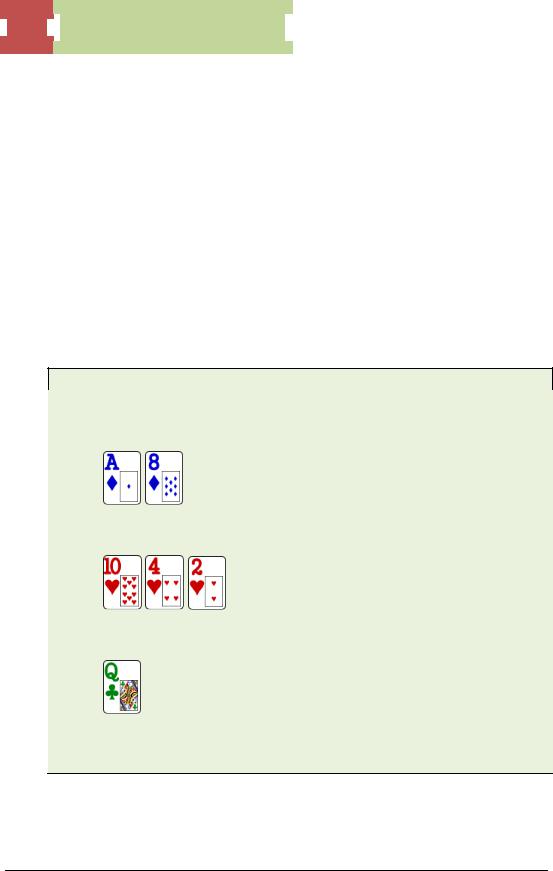
 149
149  Balancing Your Range
Balancing Your Range
lower pair that you decide to turn into a bluff), with Ax making up the majority of your range. Betting out here will cause him to fold air and weaker pairs. If he somehow ends up calling, it’ll be with A2 that checked the turn for pot control much more often than a hand like Jx. The best play here is to check and induce a bluff from random junk hands (QTo, T8s, 98s, 75s, etc.). He may be tempted to value-bet you light if has QQ or Jx because he’ll put you on 6x or 77-TT.
It’s easy to multi-table, play your standard game and still make a profit. However, you will miss many unique opportunities like these to exploit your opponents. The standard play is not always the best play.
Monotone board – villain has a weak range
Here’s an example of how we can exploit a player if we can accurately estimate his range.
100 NL – Heads-up. 100BB effective stacks.
Villain is a good, aggressive opponent who’s playing a pretty straightforward game so far. Villain raises to $4 from the Button and you call from the big blind with
The flop is
You check, and he checks behind. The turn is the
You check and he bets almost full-pot. You check-raise 3 times his bet and he quickly folds.
Let’s look at Villain’s range. Unless he’s capable of checking behind the flop with a flush, QQ or QT, his range is very narrow here. And if he is capable of that, he won’t do it often.
He will be much more likely to value-bet the flop with a flush or bet to protect QQ or QT.
© 2010 Aaron Davis and Tri Nguyen - All Rights Reserved.
http://www.DailyVariance.com
149
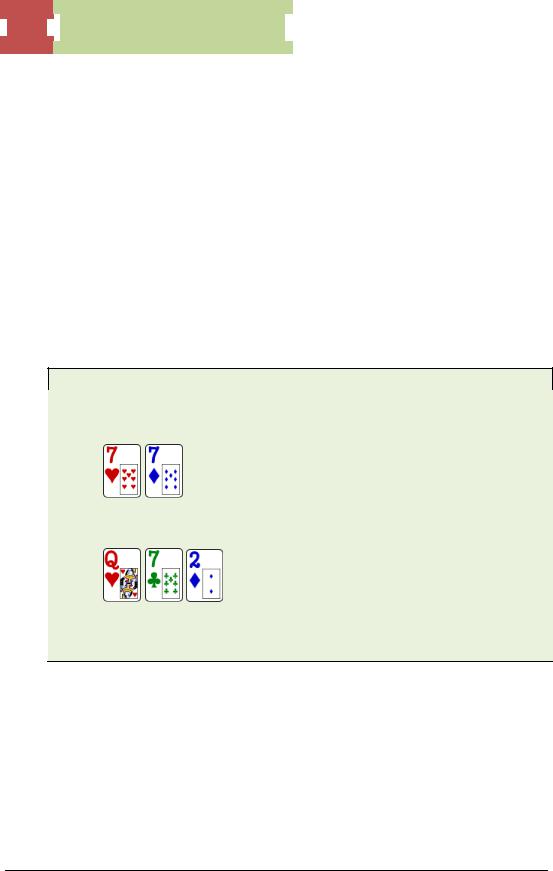
 150
150  Balancing Your Range
Balancing Your Range
Villain will usually have one of a variety of hands including a heart, such as Kx, Jx, 98 or 87.
The idea is that he can’t have a strong hand at all. You, on the other hand, can very well be check-raising with a flush.
There is one downside to your play: it’s hard to balance since it’s a spot where you either have the nuts or air. However, considering that your opponent’s range is likely weak in this spot, you rarely have to play the river. If Villain calls the check-raise, barring any specific read that he folds rivers way too often, I would give up and check-fold. I would value-bet my nut hands at the river.
The Exception
There will be situations where you can’t really do much to balance your range. No matter what you do, your hand will appear too strong.
100 NL – 6 max. 100BB effective stacks.
A weak-tight player raises to $4 from UTG and a good, aggressive player calls from the CO. You overcall from the BTN with
The flop is
The UTG player bets 3/4-pot. The CO raises 3x his bet and you shove all-in with your set of sevens.
Most of you know that when you shove here, you can never have a bluff. The flop is very dry. There is a bet and a raise in a multi-way pot, and you raise all-in. Your hand will appear to be very strong. You would never do this with even AQ here unless the game has been unusually aggressive (where everyone is getting it in with top pair, weak kicker). In this example, your range is very skewed toward strong made hands and no bluffs. If the CO is at least decent, he will fold a hand as strong as AQ here. If you cold-call the flop raise, both players are likely check-folding on the turn since your hand looks so strong.
© 2010 Aaron Davis and Tri Nguyen - All Rights Reserved.
http://www.DailyVariance.com
150
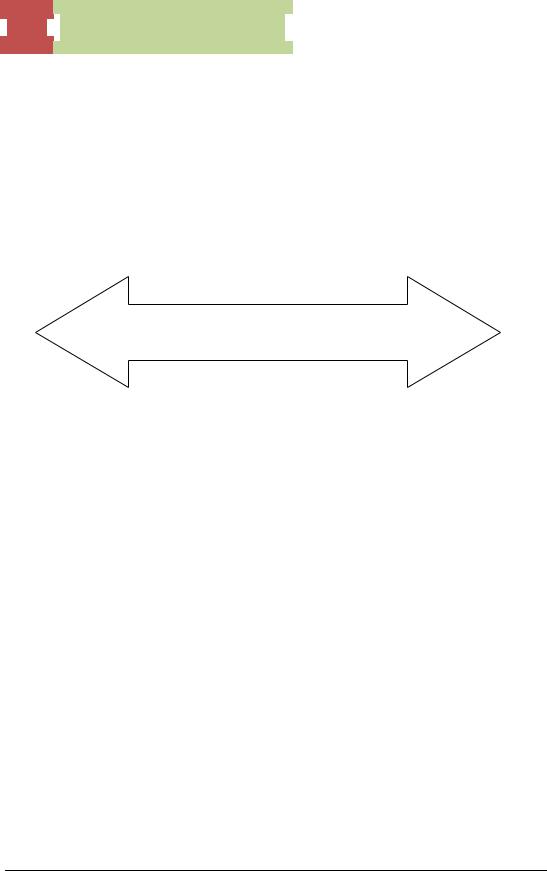
 151
151  Balancing Your Range
Balancing Your Range
Balancing Your Range
Follow the guidelines below to help you balance your game.
Any time you find yourself in a situation where your perceived range is strong (good top pair or better), then value-bet less and bluff more.
Any time you find yourself in a situation where your perceived range is weak (mid-pair or worse), then value-bet more and bluff less.
Air < |
-------------Your Perceived Range |
--------> Strong Hands |
|
Value-bet more, bluff less |
Value-bet less, Bluff more |
||
Strong Perceived Range
You should value-bet less because your perceived range is too strong. When your betting range on the river is almost exclusively for value and never a bluff, Villain will fold worse hands and call or raise with better hands. If you check instead, it may induce a good, thinking player to value-bet light with top pair, weak kicker or mid-pair. He could also try to bluff you. With a strong perceived range, you also want to bluff more if you have a hand that can’t win at showdown.
Let’s look at a quick example.
© 2010 Aaron Davis and Tri Nguyen - All Rights Reserved.
http://www.DailyVariance.com
151
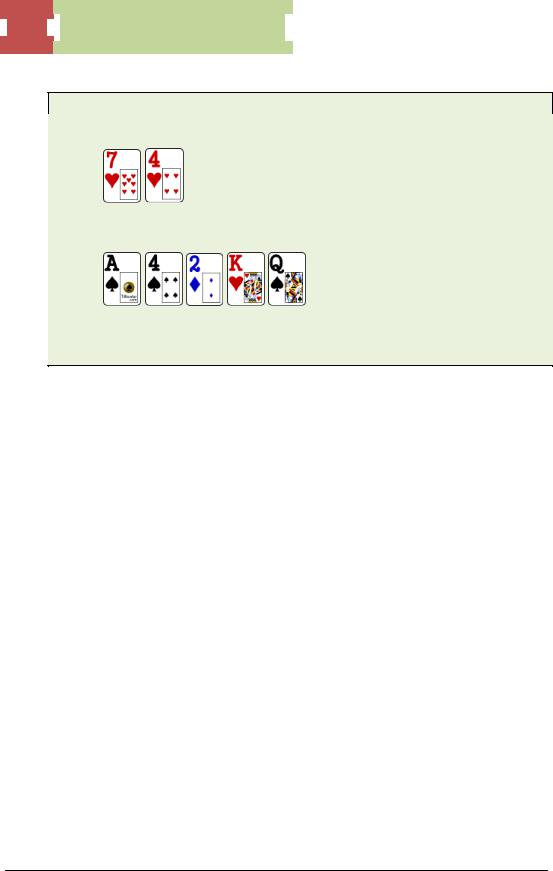
 152
152  Balancing Your Range
Balancing Your Range
100 NL – 6 max. 100BB effective stacks.
Suppose you have
and the board is
You c-bet the flop and Villain check-calls. Turn is check-check. If Villain checks to you on the river, you should turn your hand into a bluff.
You can easily have a flush, and you can also have QQ, KQ, JT. Villain usually has Ax in this spot and will fold much of the time. Most importantly, your hand is almost never good on the river if it goes check-check.
Weak Perceived Range
If your perceived range is weak, then you need to value-bet more often because Villain is less likely to believe you. You also want to bluff less because you can’t credibly represent a strong hand most of the time. Villain will call you down lighter and possibly bluff-raise you.
Observe the following the hand.
© 2010 Aaron Davis and Tri Nguyen - All Rights Reserved.
http://www.DailyVariance.com
152
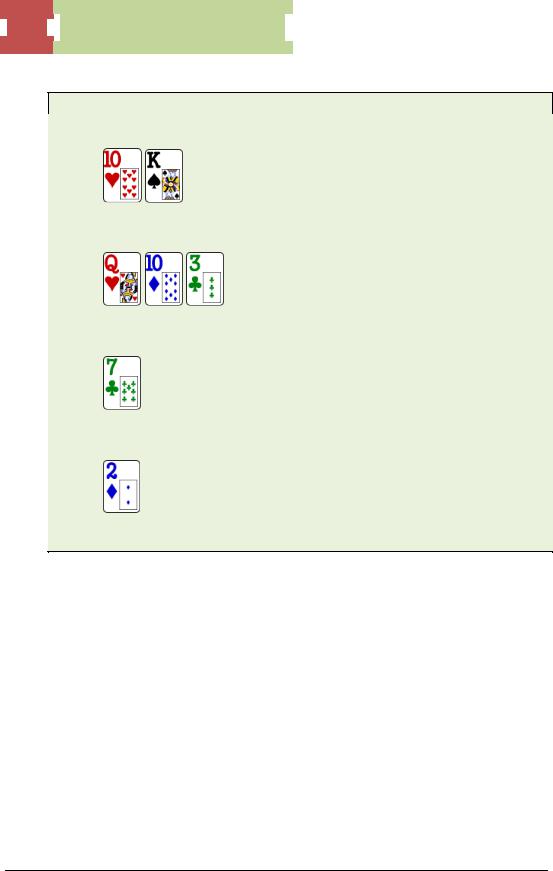
 153
153  Balancing Your Range
Balancing Your Range
100 NL – 6 max. 100BB effective stacks.
Let say you raise to $3 from the BTN with
SB calls. The flop is
He check-calls your 2/-pot bet. The turn is a
and he checks to you. You decide to check behind. The river is a
and he checks to you. You throw in a small value bet.
His check on the river implies that he has a lot of weak made hands because a busted draw would have just bet out. So a small bet here can induce some of those hands to call us. Our decent Villain would have value-bet most of his Qx hands on the river. He knows that your turn check indicates a lot of weakness because you would bet with Qx or better. Since your range is so weak by the river, you can’t really rep anything strong. He knows that and will be tempted to call you down with a hand like JT or T9.
Against a tricky, aggressive opponent, I would check back the river because I’m going to get check-raised a decent amount of the time and it’d be hard to call him down. However, against weaker players, I would value-bet the river all day.
Another line I would take is to bet-fold the turn. It makes the hand easier to play, and you can charge draws such as J9 or KJ. There’s a chance Villain is calling with weak tens such as JT or J9. He can have backdoor clubs as well.
© 2010 Aaron Davis and Tri Nguyen - All Rights Reserved.
http://www.DailyVariance.com
153

 154
154  Multi-Way Pots
Multi-Way Pots
Multi-Way Pots
© 2010 Aaron Davis and Tri Nguyen - All Rights Reserved.
http://www.DailyVariance.com
154
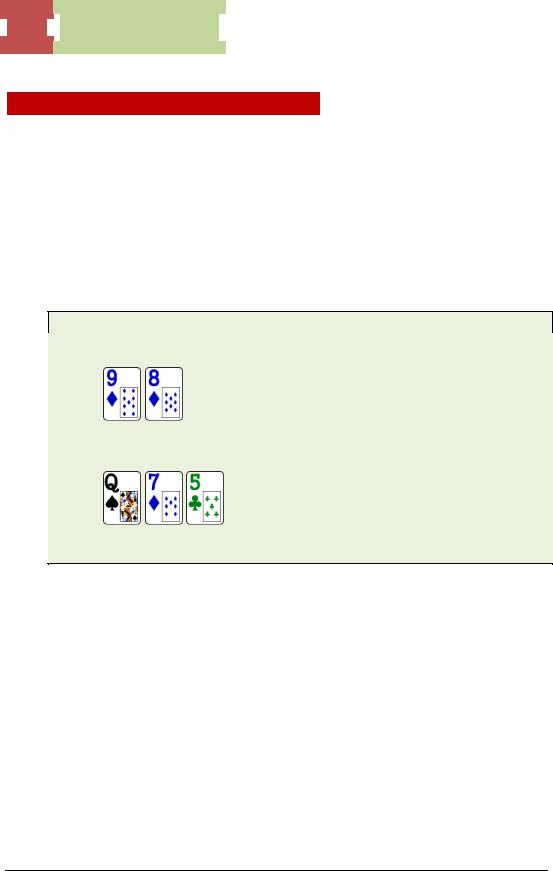
 155
155  Multi-Way Pots
Multi-Way Pots
Multi-way Pots – Proceed With Caution!
Bluff-Raising Multi-Way Pots
I wasn’t too sure if I should include this section because some readers might go ballistic and donk off all their money after reading it. Since you are a responsible poker player who wants to increase his winnings, here it is.
Bluff-raising in multi-way pots is an advanced, aggressive play. If you pick your spots well, then you’ll win a lot of money. It also makes you tougher to play against because you could conceivably have anything in any spot. Allow me to demonstrate.
100 NL – 6 max. 100BB effective stacks.
MP raises $4 and CO calls. You overcall from the BTN with
The flop is
MP c-bets 2/3-pot, CO calls and you … raise!
You have a gutshot and a backdoor flush draw. Not a great hand by any means, but you do have some equity. By raising, you typically represent a set or two pairs. If MP and CO are at least decent players, then they will be forced to fold hands as strong as KQ. If you have AQ, KQ, or a straight draw, then you almost always call here. Most decent players know that. So, what hands can you raise for value here that they beat? Not many. Unless you have a history of raising dry boards like this in a 3-way pot with at best top pair, medium kicker, they will respect you.
Put yourself in MP’s position. You c-bet with KQ on Q75 rainbow, a very dry flop. A player behind you calls and a good, aggressive player raises. You’re not going to be too thrilled about it and you will make a disciplined, good fold. Assuming you do call, you do it with the intention of folding to another big bet on the turn.
© 2010 Aaron Davis and Tri Nguyen - All Rights Reserved.
http://www.DailyVariance.com
155

 156
156  Multi-Way Pots
Multi-Way Pots
In this hand, if MP calls and CO folds, then don’t bet the turn unless you hit your gutshot or pick up a flush draw + pair or flush draw + OESD. Then you can just pot the turn to commit yourself and maximize your fold equity.
If MP is a thinking player, he’ll also have to worry about CO waking up with a strong hand.
So he will insta-fold his QJ and probably KQ as well.
If CO calls, he either has a stubborn top pair, two pair or a set. Just check the turn no matter what card falls and hope to hit your straight/backdoor flush draw on the river.
Do not try this move on a flush-draw board. You are much more likely to have a strong draw than a set or two pairs and they will be more likely to get it in lighter against you. Multi-way pots are great for bluff-raising as well.
100 NL – 6 max. 100BB effective stacks.
Let say MP raises $4 and BTN calls. You overcall from the BB with
The flop is
You check. MP c-bets 2/3-pot and BTN folds. You check-raise.
You have a ton of fold equity here because your line looks insanely strong. A decent player will fold a hand as strong as QJ on this board. He’ll have to be worried about you because he will realize that you probably never check-raise here with QJ for value. Nobody does. If he calls and the turn is a diamond, then just bet the pot to commit yourself and maximize your fold equity in case he does call the flop with a hand like KJ or QJ.
Check-raise size: you want to vary between 3-4x the betting amount (3 if it’s HU, 4 if there’s one caller). So if the PF raiser c-bets $4 into a $6 pot, then check-raise to $12-$16.
Be sure to vary the amount so that you don’t give off any sizing tells.
© 2010 Aaron Davis and Tri Nguyen - All Rights Reserved.
http://www.DailyVariance.com
156
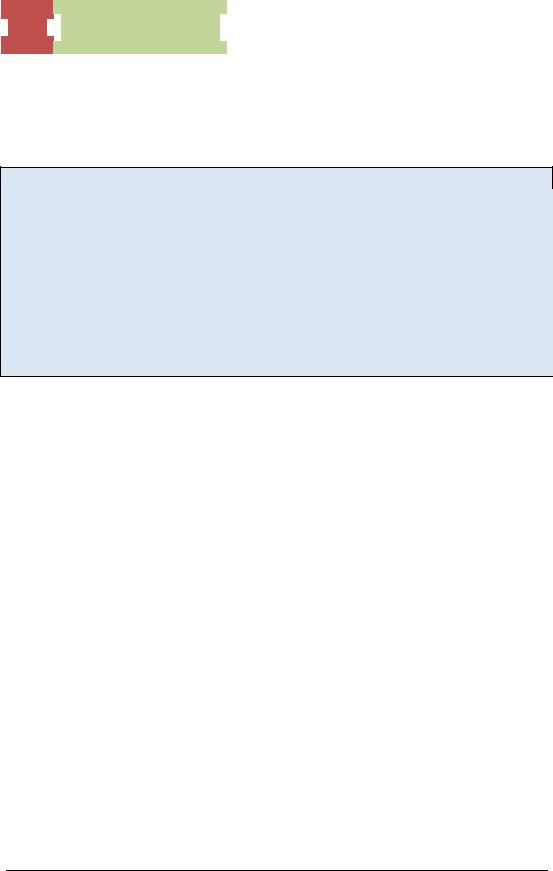
 157
157  Multi-Way Pots
Multi-Way Pots
Notice how in each hand, you have a gutshot, backdoor straight draw, and/or a backdoor flush draw. Always give yourself some rope to hang onto in case they end up calling your flop raise.
WARNING: When you’re pulling stunts like these, please have an idea of how villains play. Don’t blow off your entire stack against a donk who can’t fold top pair, no kicker. Don’t do this against players who don’t know how to read hands. In all honesty, there are many players who are not capable of making this fold with QJ or even KJ in this spot at 100NL and lower. They either can’t understand at that level or they just can’t fold even though they know that calling is bad. What works at higher stakes may never work in the lower stakes. At the very least, I hope this example will motivate you to think beyond the norm. Instead of just folding because you have very little equity in a hand, think about your range and your opponent’s range. Think about all your options and determine which is the
best. How else are you going to improve?
© 2010 Aaron Davis and Tri Nguyen - All Rights Reserved.
http://www.DailyVariance.com
157

 158
158  Scare Cards
Scare Cards
Scare Cards
© 2010 Aaron Davis and Tri Nguyen - All Rights Reserved.
http://www.DailyVariance.com
158
